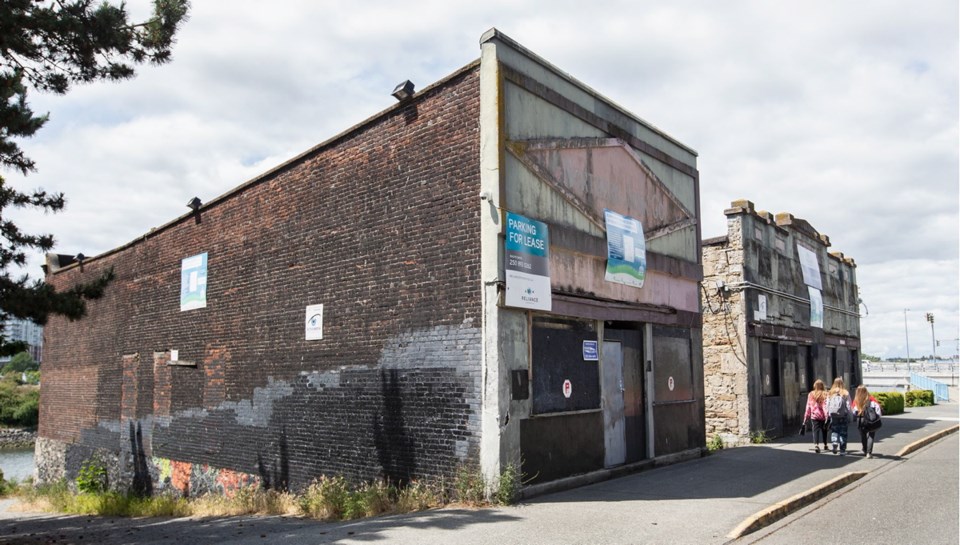A commentary by the president of the Hallmark Heritage Society
On June 11, Victoria’s committee of the whole considered a recommendation of planning staff that the current proposal for the Northern Junk buildings be sent to a public hearing. Thanks to the actions of a majority of councillors, the proposal was sent back to the planning staff and the owners for further review.
The buildings are the Caire and Grancini Warehouse at 1314 Wharf St., designed by architect John Wright in 1860; and the Fraser Warehouse at 1318 Wharf St., designed by architect Thomas Trounce in 1864.
Planning staff related how these are two of the oldest building in the city that have survived from the early gold rush period and that they reflect the needs of the early pioneers to import materials into the Inner Harbour.
But planning staff also were recommending that the committee of the whole send the project to a public hearing despite the admissions by staff that:
1. The proposed design did not meet the city’s Old Town design guidelines, and
2. The proposed design did not meet the Standards and Guidelines for the Conservation of Historic Places in Canada, a guide the City has adopted to help in the conservation of historic buildings.
Planning staff admitted that the proposed design was more like a new building and not a rooftop addition to an older, heritage building, which is recommended by city planning standards.
In putting the recommendation forward, staff members admitted that, while the proposed design did not meet the usual requirements for the conservation of the heritage buildings, it was not too bad. Is this how we accept designs for buildings in Victoria? Not too bad?
They justify the acceptance of a design that does not fully meet the guidelines on the basis that the proposal provides some amenities to the city:
1. It provides rental units, but these would not be affordable. In fact, staff and council concede that rents would be very high due to the waterfront location. Further, new rental units are being constructed and planned throughout the city. There is no need to ignore the city-defined objective of heritage conservation to add more. We cannot create the heritage and history elsewhere.
2. It provides a continuation of the waterfront walkway, for about 50 feet, terminating at the property boundary. This walkway would be a benefit to the owners, bring foot traffic to the probable waterfront café or pub at a most desirable location.
3. The historic building would be rehabilitated and improved. This same owner has neglected the building for 10 years. It seems strange we would reward the owner for now doing what was obligated by bylaw, an obligation the city has been unable or unwilling to apply.
The proposal for the two buildings has been sent back to staff and to the owners to try and find a solution that will follow the city’s Old Town design guidelines. There must be some way that these buildings can be preserved without burying them within a monolith.
There must be some way that the continued neglect can be stopped, and the buildings rehabilitated while providing a living representation of the history of Victoria.



